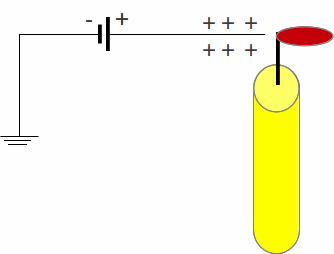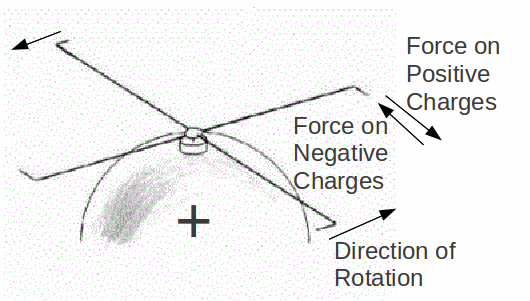When a thin wire is connected to a high voltage source, the electric field at the end of the wire can become intense. A wind of charged ions streams away from the end of the wire. This may be demonstrated by placing a candle flame near the end of the wire. The flame is deflected by the wind, which may be intense enough to blow the candle out.

The electric field is made more intense because there is an inverse relationship between the sharpness of the end of the wire and the strength of the electric field. The sharper the end of the wire, the stronger the electric field produced.
The wind can be used to produce mechanical motion by charging a funny sort of windmill type machine called a pinwheel, the 'sails' of which consist of sharply pointed tips, each of which emits an electric wind in the same direction to make the mill rotate. The pinwheel is fixed to a conductor charge to a high positive voltage.

Air contains a small fraction of ions. In the region of the intense magnetic field at the ends of the wire tipped windmill the ions are accelerated. When these collide with air molecules they create more ions. An avalanche of ions is created. Surrounding air molecules are carried along by the stream. Because the pinwhell is kept at a constant voltage there is a net force causing it to rotate against the wind.
